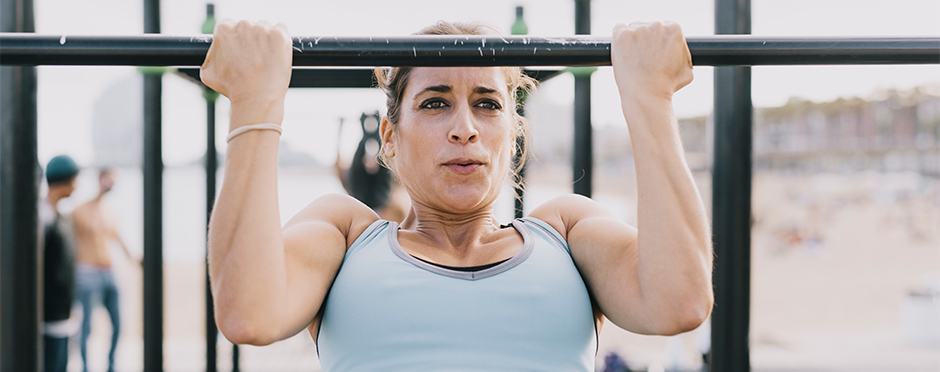
Stronger than Yesterday: Exercises to Improve Pull-Up Strength
Leave a CommentWhether it be a desk, a car or a couch, the average American has plenty of opportunity to sit throughout the day.
Sitting many hours of the day can lead to poor posture as well as weak and tight muscles – especially in the neck, chest and shoulders. If this sounds familiar, or if you simply have an interest to increase your upper body strength, the pull-up and push-up are great movements to consider adding to your regular exercise routine! The information below will review tips to progress a pull-up, specifically. Stay tuned for Stronger than Yesterday: Progressing a Push-Up.
Pull-ups are a strength-based exercise many may remember from grade school. Regardless if those are good or bad memories, there is no better time than the present to learn or improve your pull-up skills.
Benefits of the Pull-Up
The pull-up utilizes many large muscles like the latissimus dorsi, deltoids, biceps and trapezius.1 However, pull-ups are not only an upper body exercise, as they recruit abdominal and gluteal muscles, too! The direction the hands face will influence the muscle contribution to your movement. For example, in a strict pull-up, the palms will face away from the body. In a chin-up the palms face the body.1 Overall, practicing these movements can lead to:
- Improved posture
- Greater upper body strength
- A reduction in back pain that may be caused by weak muscles
- Increased confidence in the gym
- Improved quality of movements in daily activity2
Progressing the Pull-Up
The pull-up, although greatly beneficial, can be a challenging movement for most everyone! If you read the last line, and thought “yes!” know you’re not alone. The movements listed below are tips to improve pull-ups. It is worth noting that commitment and consistency to pull-up practice is key to improved skill. These exercises can provide benefits to overall body strength as you embark on your pull-up journey!
1. The Hollow Hold
- Begin by laying on your back, with the legs straight and arms reaching alongside the ears.
- Pull back on the toes to flex the feet and turn the palms toward the ceiling.
- Bracing the core, press the lower back into the surface beneath you while simultaneously lifting the arms and legs 6-10 inches off the ground.
- Hold 10–30 seconds for three to four sets. Time will depend on core strength so adjust when necessary.
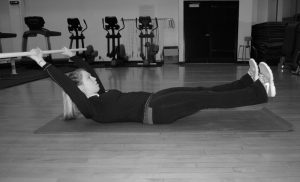
2. The Hollow Hang
- When you feel confident, take your hollow hold to the bar!
- Reach for the pull-up bar, brace the core and let your feet leave the floor.
- Squeeze the abdomen and glutes to keep the hips under the ribcage.
- Hold 10–30 seconds for three to four sets. Time will depend on core strength so adjust when necessary.
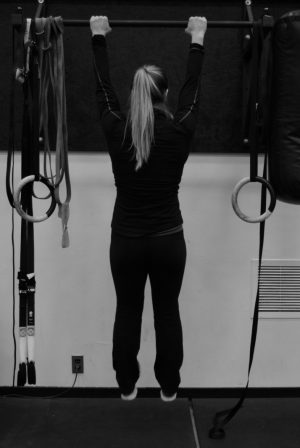
3. Flexed-Arm Hang
- Using a box or step, make your way to the top of the bar.
- After deciding the way you want the hands to face, grab the bar tight.
- Bend your elbows into full flexion (all the way), keeping them close to the torso. By keeping the elbows close to the torso you can avoid “winging” of the elbows, which increases the risk of injury.
- Step your feet off the box.
- Hold 10–30 seconds for three to four sets. Time will depend on core strength so adjust when necessary.
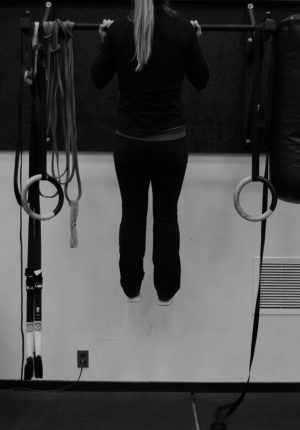
4. Eccentric Pull-Up
- In this exercise, eccentric simply means the lowering phase.
- Begin in the same way as the flexed arm hang.
- Once your feet leave the step, allow the body to slowly lower to the floor.
- As you lower down count to four or five seconds. Repeat for three sets of five reps.
5. Assisted Pull-Up
- Practice your pull-up using an assisted pull up machine, a partner or a band.
- Using the F.I.T.T. principles, begin with three sets of 8-12 pull-ups. These values will depend on personal ability and strength. Adjust as needed!3
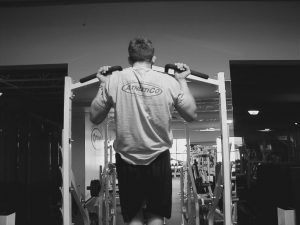
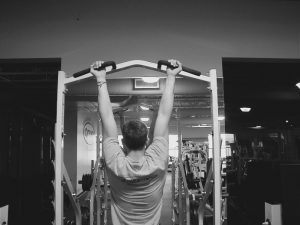
Keep Safety Top of Mind
Practicing these fundamental movements will encourage the coordination of the muscles involved in the pull-up. Further, these exercises are meant to also help build strength to be able to do a pull-up, or improve current ability. It is incredibly important to note that safety should always be kept in mind. Proper form is key!
If you experience pain in any of these movements do not continue and allow at least one day of rest between training days. If you experience pain that lasts more than a week, click the button below to schedule a free assessment at an Athletico location near you.
Happy pulling!
The Athletico blog is an educational resource written by Athletico employees. Athletico bloggers are licensed professionals who abide by the code of ethics outlined by their respective professional associations. The content published in blog posts represents the opinion of the individual author based on their expertise and experience. The content provided in this blog is for informational purposes only, does not constitute medical advice and should not be relied on for making personal health decisions.
References:
1. Larson, Amber. “Pull Up Vs. Chin Up: A Comparison And Analysis.” n.d. Breaking Muscle. 28 January 2017. <https://breakingmuscle.com/learn/pull-up-vs-chin-up-a-comparison-and-analysis>.
2. Tsatsouline, Pavel. “The Best Upper Body Pull.” 13 January 2013. Strong First. 27 Januray 2017. <https://www.strongfirst.com/the-best-upper-body-pull/>.
3. ACSM Information on: Resistance Training for Health and Fitness. American College of Sports Medicine, 2013.
